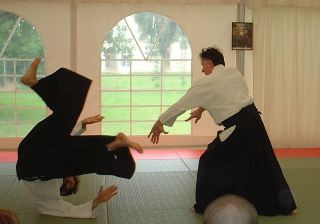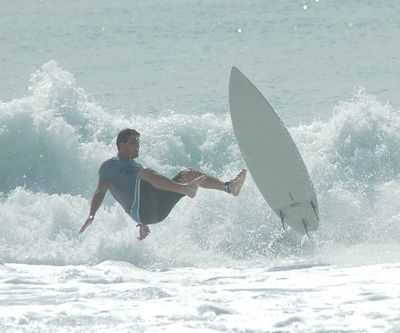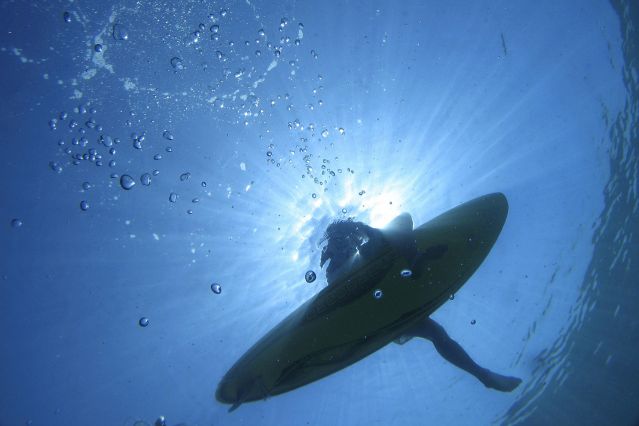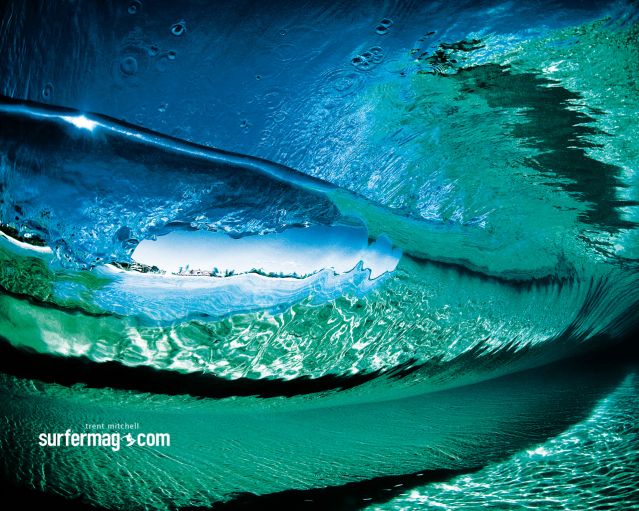
Memory
We All Lose Our Balance: The Art of Falling Well
Tough challenges can throw us off balance. Is there an art to "falling well"?
Posted October 1, 2013

I've often had fears of falling. Not only do I worry when traversing icy sidewalks, but I’ve often gotten anxious during activities that were supposed to be fun, like roller skating, ice skating, and downhill skiing. Often my primary goal was to get through a session without wiping out. If I managed to avoid falling, it was a success. But there was a major downside to my approach: I never became very adept at these sports. You can only advance so far if your main aim is to say, “I didn’t fall.”

Contrast this with the advice that I got from a friend who practiced martial arts. In that context, the assumption was that all martial arts practitioners would have their share of falls. No one was going to make it through the training without them…so you might as well learn how to fall safely. On the surface, this might sound like pessimism; but it's really about being prepared, so that we can minimize the risk of serious injury.
These themes of “falling well” were echoed in my recent surfing lesson in Hawaii, which I introduced in last month’s entry, “Paddling Away from Regret: Pursuing a Dream Despite Fear."
When I tried surfing, my goals were pretty modest: My hope was simply to be able to stand up on the surfboard and catch a wave, even if only for a few seconds. But if I wanted to shoot for this goal, I needed to accept that the ride would probably end with a fall.
Now the idea of falling off a surfboard into water might not sound like a big deal. After all, it’s not like falling on a cement sidewalk. But there was a slight complication. In my mind’s eye, I had pictured surfing in a place where the sea bottom was blanketed with soft, smooth, forgiving sugar sand. But instead, the bottom was peppered with good-sized lava rocks. And it was fairly shallow. So if I landed in the water feet first, it was quite possible that I’d bash my foot on a not-so-smooth, not-so-forgiving rock.
My instructor offered a solution, but it was hard for me to believe when I first heard it: Whenever possible, fall backwards.

Now this did not sound like the most natural strategy. After all, I wouldn’t throw myself on my back while roller skating. But here, with surfing in this relatively shallow water, this was what I needed to do to protect myself.
Would this weird strategy actually work? It was time to find out.
My instructor waited for the approach of a good wave, and she gave me a little push. When I felt the water start to rise underneath me, I moved my arms back, pushed myself up on my knees, got my feet positioned under me…and slowly, cautiously stood up. When I started to lose my balance a few seconds later, I threw myself back, surrendering to the water’s embrace.
I felt the water close over me, tasted the salt…and I was OK!

We had less than an hour to surf, so there was no time to waste. I struggled back up onto the board (harder than it might sound with water that's up to your waist or chest). And with a lot of help from my instructor, I caught some more waves…and took some more falls. I even had a collision with another surfer, ending in a dramatic wipeout. But it really didn’t matter. The falls were part of the experience, but they weren’t the focal point.

What did matter? What will I hold in my memory? Apart from the surfing itself, I can savor that memory of being out in the bay, seeing the sun dancing on the turquoise water, with that postcard view of Waikiki in front of me. But because I took the risk of trying to surf, I got even more: I can remember that feeling of the water rising up underneath me, gently but persistently carrying me along…and that pleasure of getting to my feet, however unsteadily, and riding the wave.

- - -
As I described in my last entry, the path away from regret is usually not a reckless and impulsive one; but it does often involve some risk. Because we’re not perfect, we’ll probably take a few spills. And if we can see in advance that slip-ups are likely, we can try to learn about the safest ways to fall in that particular situation, minimizing the risks to ourselves and others. And we can commit ourselves in advance to getting back up again.
Most of us would rather not fall, of course; and we certainly don’t want to set ourselves up for failure. Yet we might still benefit from learning how to fall well—with a certain grace. If falling starts to seem less scary, then it may recede from the center of our attention, leaving room for more hope, energy, and moment-by-moment enjoyment.
Later on, as a challenging experience recedes into memory, we also have some choice in how we frame it in our minds. Rather than obsessing about our wipeouts, we can choose a focus in which our moments of courage, growth, and fun take center stage.




